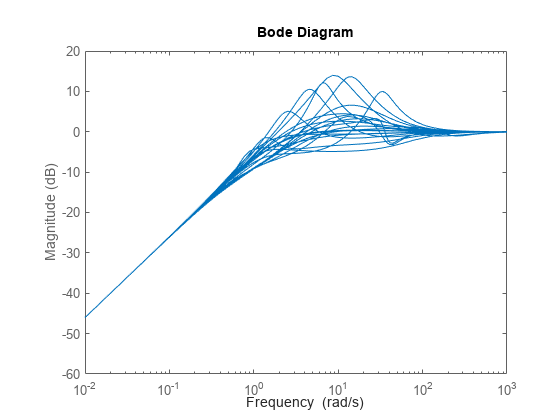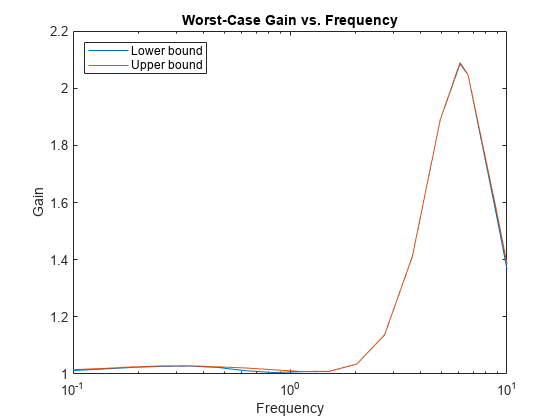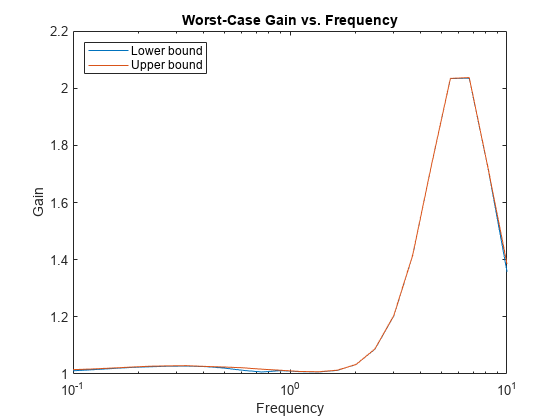wcgain
Worst-case gain of uncertain system
Syntax
Description
[ calculates the worst-case
peak gain of the uncertain system wcg,wcu]
= wcgain(usys)usys. Peak
gain refers to the maximum gain over frequency (H∞ norm).
For multi-input, multi-output (MIMO) systems, gain refers to the largest
singular value of the frequency response matrix. (See sigma for more information about singular
values.) The structure wcg contains upper and
lower bounds on the worst-case gain and the critical frequency at
which the lower bound peaks. (See Worst-Case Gain.) The structure wcu contains
the values of the uncertain elements of usys that
cause the worst-case peak gain.
[ restricts
worst-case computation to the frequencies specified by wcg,wcu]
= wcgain(usys,w)w.
If
wis a cell array of the form{wmin,wmax}, thenwcgainreturns the worst-case gain in the interval betweenwminandwmax.If
wis a vector of frequencies, thenwcgaincalculates the worst-case gain at the specified frequencies only, and returns the worst of those gains.
Examples
Input Arguments
Output Arguments
More About
Algorithms
Computing the worst-case gain at a particular frequency is equivalent to computing the structured singular value, μ, for some appropriate block structure (μ-analysis).
For uss and genss models, wcgain(usys) and wcgain(usys,{wmin,wmax}) use
an algorithm that finds the worst-case gain across frequency. This
algorithm does not rely on frequency gridding and is not adversely
affected by sharp peaks of the μ structured
singular value. See Getting Reliable Estimates of Robustness Margins for
more information.
For ufrd and genfrd models, wcgain computes
the μ lower and upper bounds at each frequency
point. This computation offers no guarantee between frequency points
and can be inaccurate if the uncertainty gives rise to sharp resonances.
The syntax wcgain(uss,w), where w is
a vector of frequency points, is the same as wcgain(ufrd(uss,w)) and
also relies on frequency gridding to compute the worst-case gain.
In general, the algorithm for state-space models is faster and
safer than the frequency-gridding approach. In some cases, however,
the state-space algorithm requires many μ calculations.
In those cases, specifying a frequency grid as a vector w can
be faster, provided that the worst-case gain varies smoothly with
frequency. Such smooth variation is typical for systems with dynamic
uncertainty.
Version History
Introduced before R2006a



